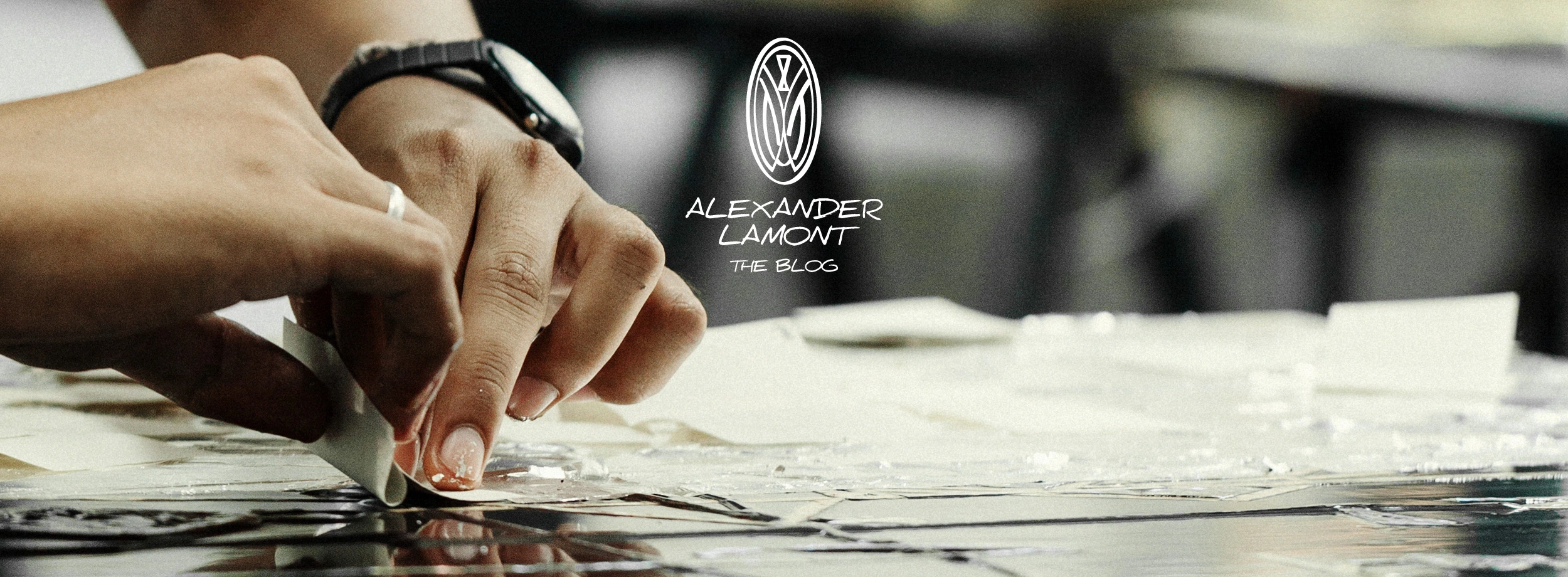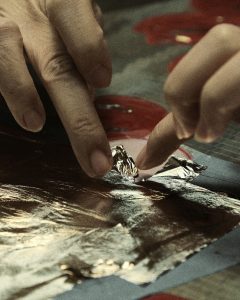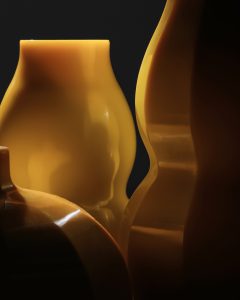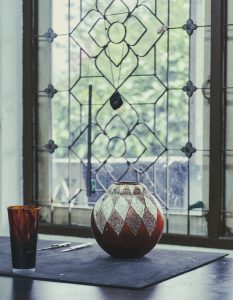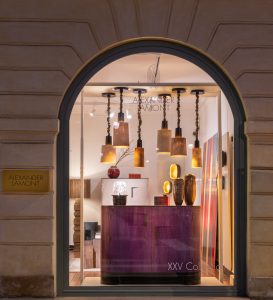I have mentioned the influence of the Art Deco period in the materials I use, and the designs I make so I thought I would write a piece about some actual pieces from that period that I love. This period arose between the two world wars – the 1920’s, 30’s and 40’s. Although there are well defined historical treatise on the subject, for me the period – and the beautiful pieces from it – exude a meeting point of the excitement of the new world and the nervous tension of the approaching catastrophe. There is a minimalism that has replaced the heavy decoration of the preceding Belle Epoque, but the materials and skills and lines are exuberant and artistic. These works evoke the opening wings of a butterfly – its iridescence and decorative wonder.
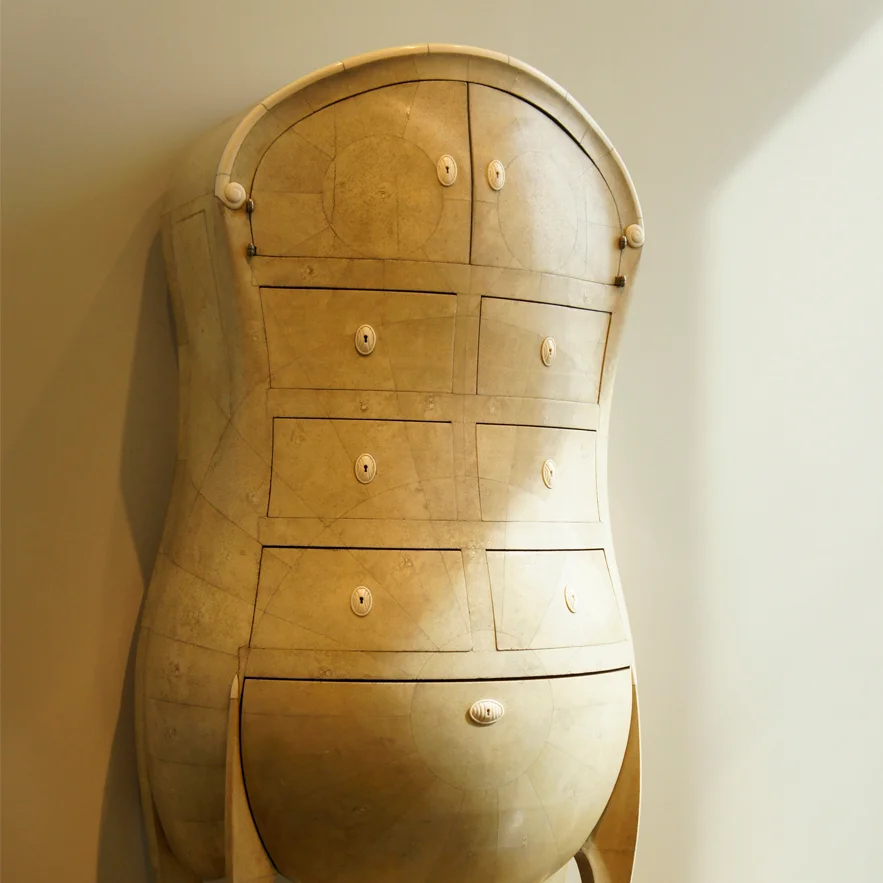
I have visited this cabinet in Paris about 4 times. It sits beside a window, smaller than I expect it to be. Groult made two cabinets – a male version and this more curvaceous female one. Such a ‘boule’ cabinet is an extremely difficult work of cabinet making. The shagreen has been beautifully arranged to follow the plump belly and chest of the piece. It is a piece I would love to hug – like a tree, rich with knowledge and spirit. This is the greatest work in shagreen ever made in my view as it is a functional piece of furniture that also emphatically uses the nature of the material to deliver a texture and pattern that manages to depict the grace of the human form.
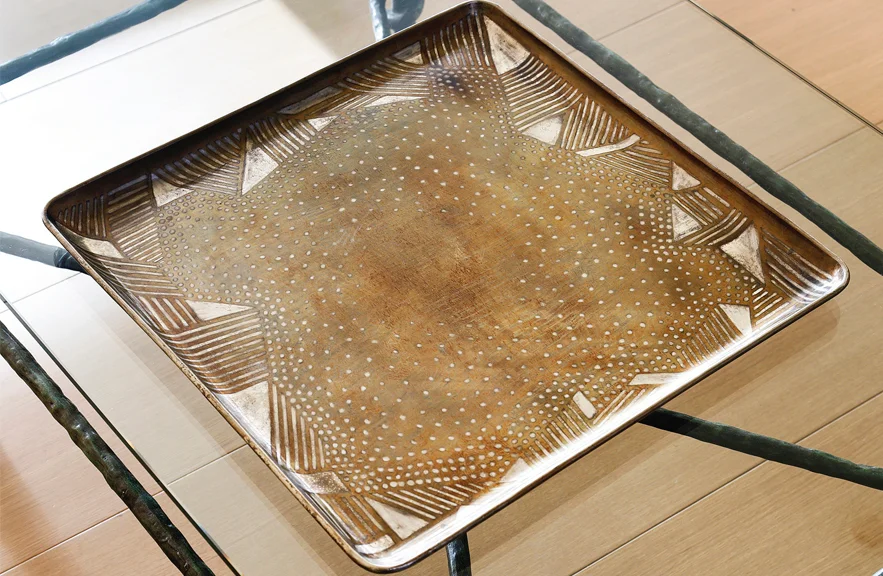
The work of Jean Dunand perfectly captures the spirit and character of how I imagine Paris in the 1920’s. There are bold decorative flourishes, geometric and animal details and always the sense of the hand that has worked the material and made gentle aesthetic decisions as the piece develops. Take the dotted pattern of the silver in this tray. It is clear that no grid was used – someone made the dots in a painterly way but then sealed them with a very difficult silvering technique that was done over patinated copper. There is almost a ‘primitive’ aspect to the design that is enhanced by the raw bronze table it sits on by Alberto Giacommetti.
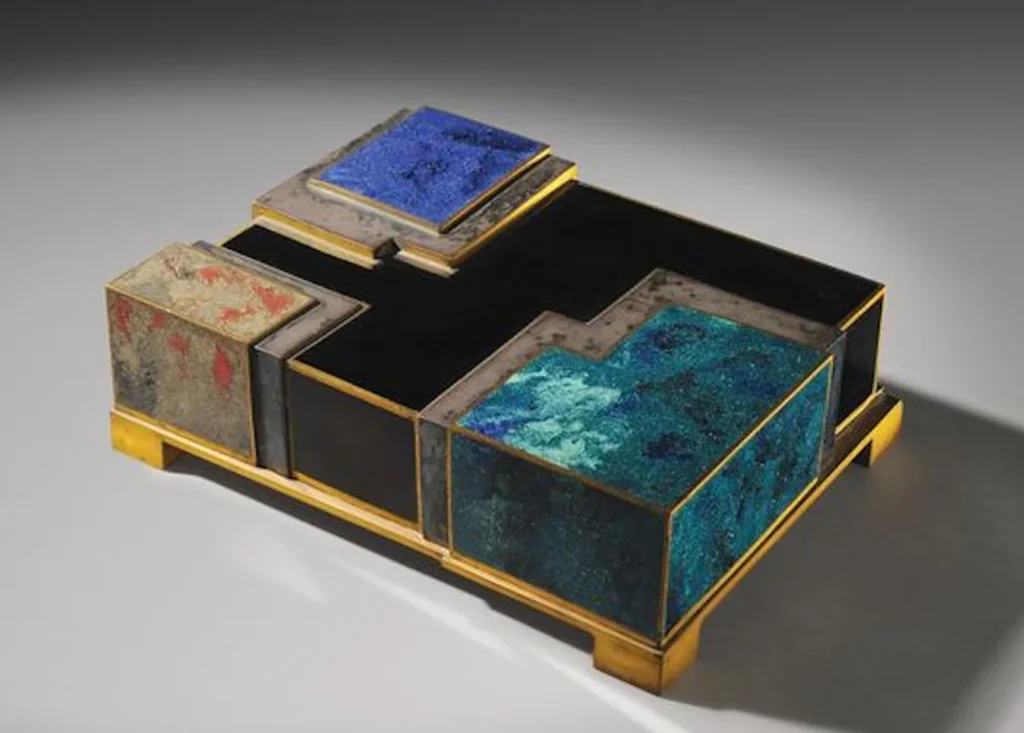
An incredibly beautiful box that shows for me the artistry of small pieces. The contrasting materials all have a certain organic nature to their surface pattern. Bringing together natural materials and pigments that have their own nature is how I design my pieces. This box is a meeting of the work of Jean Dunand and the enamel artist Jean Goulden who was a doctor who became fascinated by enamel after seeing examples of Byzantine enamel work. He brought the beautiful colours to the metal boxes formed by Dunand and Dunand added the black lacquer that creates such a rich contrast to this piece.
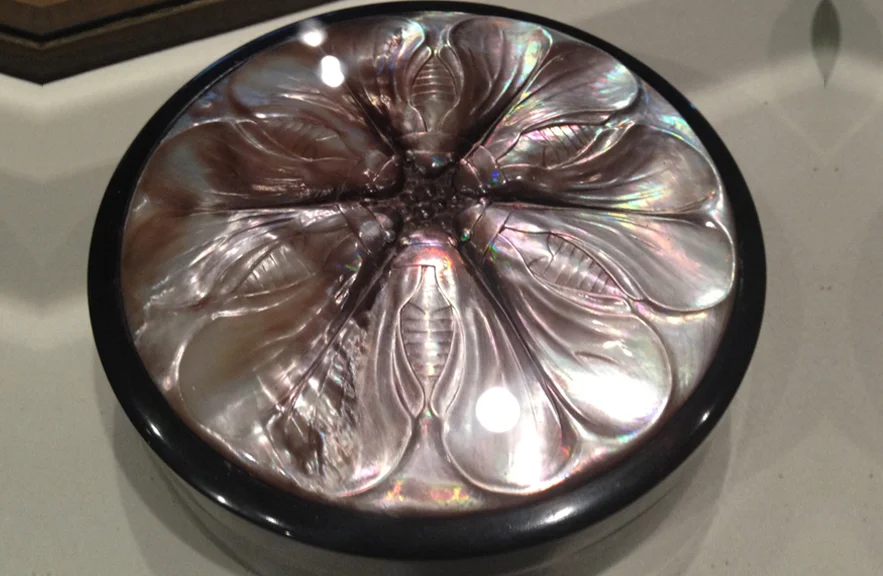
There is a small vitrine in the Museum of Decorative Arts in Paris. It is in the Art Deco area which is almost at the end of the museum. It would be very easy to overlook this gallery and this vitrine if you were feeling exhausted from the Louvre and cultural excess that is Paris. Inside this vitrine is a group of tiny miniature boxes by the artist Clément Mère. Like these pieces, information on Mère is very hard to find. It is a magical pleasure to be in the museum beside these tiny pieces, just out of reach through the glass, and feeling my sense of homage to someone who so clearly understood and cherished the forces and nature and decoration together.
These are a few pieces that I love that do not necessarily exist as iconic works of the Art Deco period. My selection are those that speak to me more of the fragility and ‘quiet’ and fun and delight within a period that, like a dragonfly, shimmered for just a short time before it was extinguished.
